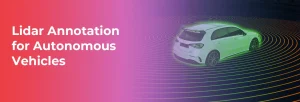Advanced Driver Assistance Systems (ADAS): A Road to Safer and Smarter Driving
Advanced Driver Assistance Systems (ADAS) are intelligent features built into modern vehicles that help drivers operate more safely and efficiently. These systems use a combination of sensors, cameras, radars, and AI algorithms to monitor the environment around the vehicle and provide real-time alerts or even take corrective action.
Some common examples of ADAS features include:
- Adaptive Cruise Control: Maintains safe distance from the car ahead.
- Lane Departure Warning: Alerts when the vehicle drifts out of its lane.
- Automatic Emergency Braking: Applies brakes to prevent collisions.
- Blind Spot Detection: Warns of vehicles hidden from view.
- Traffic Sign Recognition: Reads and displays road signs in real time.
Simply put, ADAS enhances driver awareness, reduces accidents, and creates a smoother driving experience. It is also a stepping stone toward fully autonomous vehicles.
Why ADAS Matters Today
Cars are no longer just machines that move us from one place to another. With technology evolving, vehicles have become intelligent systems capable of preventing accidents, reducing driver fatigue, and improving road safety. This is where ADAS steps in.
A 2024 study by the European Transport Safety Council found that ADAS features like automatic emergency braking can reduce rear-end collisions by up to 40%. These advancements aren’t just conveniences; they’re lifesavers.
As car manufacturers, fleet operators, and mobility innovators embrace autonomous technologies, ADAS has become the foundation of the journey toward self-driving cars.
Ready to take your ADAS project to the next level? – Contact Macgence today and let’s drive the future together.
Key Considerations in ADAS Development
Building robust ADAS solutions is not just about sensors and algorithms. It requires reliable, high-quality data and a well-structured development process. Here are a few considerations businesses must address:
1. Sensor Data Collection
ADAS depends on multiple sensors—LiDAR, radar, cameras, ultrasonic sensors—working in unison. Collecting accurate real-world driving data across different environments (urban, rural, highways) and weather conditions is critical.
2. Data Annotation and Labeling
Raw sensor data is only useful when it’s annotated. For example:
- Bounding boxes to identify vehicles and pedestrians
- Semantic segmentation for road lanes, traffic signs, and obstacles
- 3D point cloud labeling for LiDAR data
This step ensures the AI models powering ADAS can “see” and make the right decisions.
3. Safety and Compliance
With ADAS directly impacting road safety, regulatory compliance and ethical standards are crucial. Data handling must align with GDPR, ISO 26262, and functional safety frameworks.
4. Scalability and Diversity of Data
A system trained only on one type of road or weather condition will fail in real-world scenarios. Diverse datasets covering regions, seasons, and traffic patterns are essential for global-scale deployment.
How Macgence Supports ADAS Development
At Macgence, we understand that data is the driving force behind ADAS. Our services are designed to help automotive innovators and AI companies accelerate their ADAS projects with accuracy, scalability, and reliability.
Our ADAS-Focused Services
Multi-Modal Data Annotation
- Video annotation for real-time driving footage
- LiDAR and radar data labeling with high precision
- 2D/3D bounding boxes, semantic segmentation, keypoint labeling
Sensor Data Collection
- On-road data collection across diverse geographies and weather conditions
- Support for camera, LiDAR, radar, and ultrasonic sensors
- Tailored datasets for specific ADAS use cases
Quality and Compliance Assurance
- Stringent QA workflows for 99%+ annotation accuracy
- Compliance with international automotive safety and data privacy standards
Human-in-the-Loop (HITL) Validation
- Continuous human review to ensure AI models learn safely
- Reduction of bias and errors in automated ADAS training
Custom AI Dataset Development
- Bespoke datasets for unique ADAS features (e.g., adaptive headlights, parking assist)
- Scalable workforce to meet enterprise demands
Why Partner with Macgence?
- Global Reach: Access to region-specific driving scenarios worldwide.
- Scalable Teams: Large, trained workforce capable of handling complex annotation tasks.
- Proven Expertise: Experience supporting top automotive and AI firms in building ADAS solutions.
- Future-Ready: Services designed to bridge the gap between ADAS and fully autonomous driving systems.
Final Thoughts
ADAS is not just about making cars smarter; it’s about making roads safer for everyone. From reducing accidents to laying the groundwork for autonomous mobility, its impact is undeniable. But building these systems requires more than technology—it requires high-quality data, precision annotation, and trusted partners.
At Macgence, we bring the right mix of expertise, scalability, and compliance to help you accelerate your ADAS journey.
FAQ’s
ADAS, or Advanced Driver Assistance Systems, are technologies that use sensors, cameras, and AI to help drivers operate vehicles safely. Common features include adaptive cruise control, lane departure warning, and automatic emergency braking.
ADAS reduces human error by providing real-time alerts and automatic interventions. Studies show ADAS features can cut rear-end collisions by up to 40%.
Challenges include collecting diverse sensor data, annotating it accurately, ensuring compliance with safety regulations, and training AI models to handle real-world conditions.
ADAS assists drivers by improving awareness and safety, while autonomous driving aims to remove the need for human drivers entirely. ADAS is a stepping stone toward full autonomy.
Macgence provides end-to-end ADAS support through multi-modal data annotation, global sensor data collection, human-in-the-loop validation, and custom AI dataset development.
You Might Like
October 11, 2025
Why Your AI Can’t Understand Humans: The Multimodal Conversations Datasets Gap
Your conversational AI is failing, and you probably don’t know why. It responds to words perfectly. The grammar checks out. The speed is impressive. But somehow, it keeps missing what users actually mean. The frustrated customers. The sarcastic feedback. The urgent requests are buried in casual language. Here’s what’s really happening: your AI is reading […]
October 10, 2025
Why Your Self-Driving Car Needs Perfect Vision: The LiDAR Annotation Story
Imagine you’re driving down a busy street. Your eyes are constantly scanning – pedestrians crossing, cars merging, cyclists weaving through traffic. Now imagine teaching a machine to do the same thing, except it doesn’t have eyes. It has lasers. And those lasers need to understand what they’re “seeing.” We’ve seen many product launches that aim […]
October 9, 2025
What is Synthetic Datasets? Is it real data or fake?
Picture this: You’re building the next breakthrough AI product. Your models need millions of data points to learn. But there’s a problem. You can’t access enough real-world data due to various factors, such as compliance issues, security factors, and specific needs. Privacy regulations block you. Collection costs are sky-high. And even when you get data, […]




